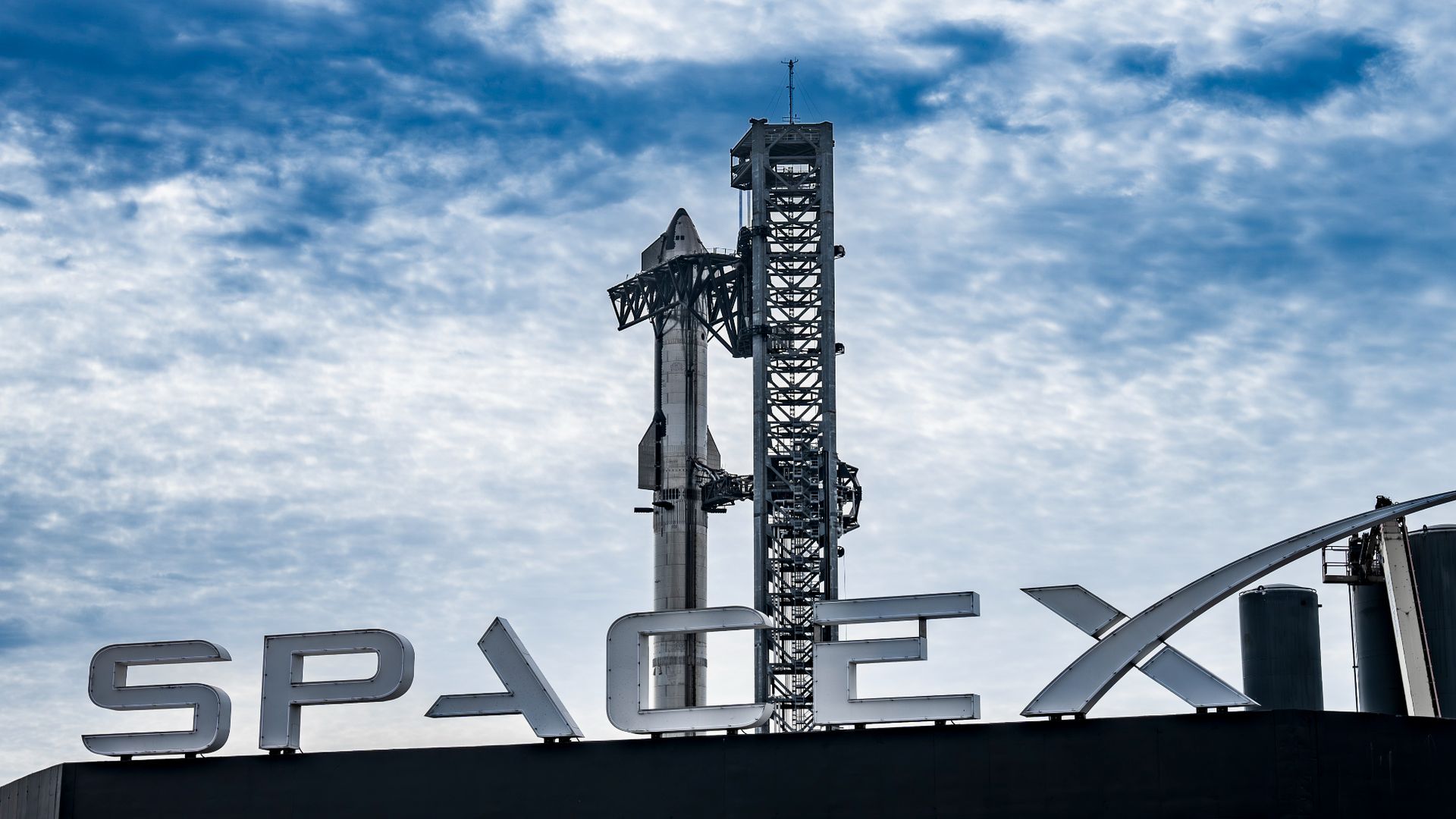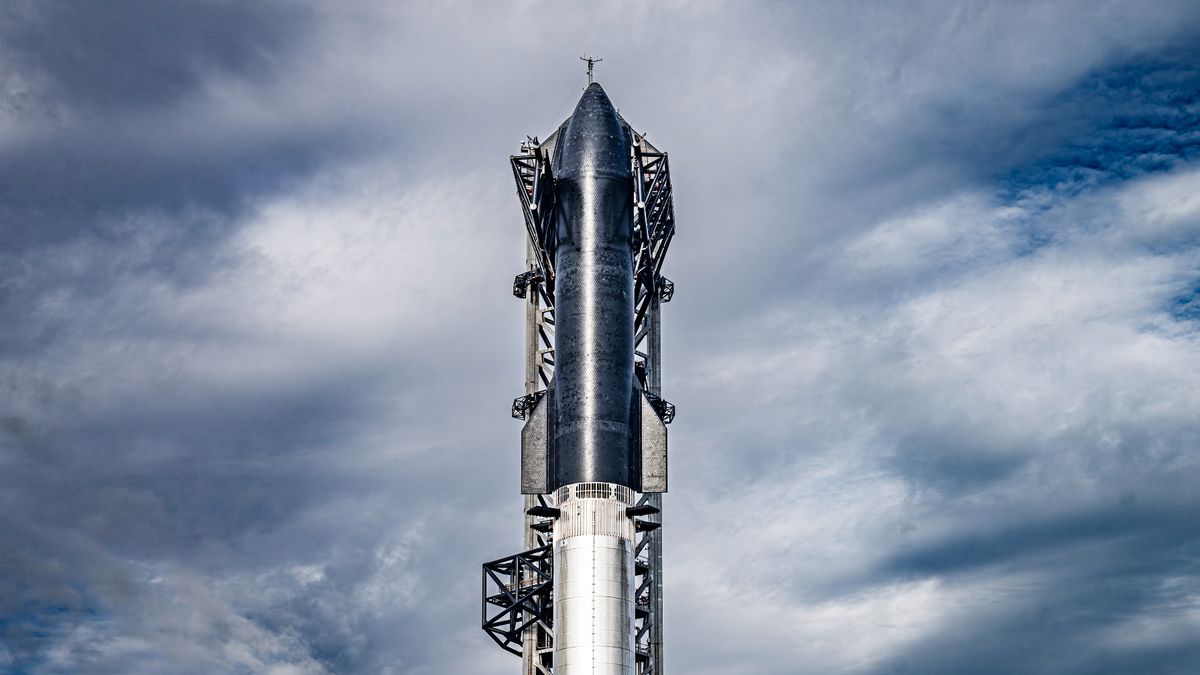Follow us on Google News (click on ☆)

The third SpaceX Starship set to launch, assembled at Starbase in Texas. Photo published by SpaceX on X on March 12, 2024.
Credit: SpaceX via X
SpaceX does not hide its ambitions: to use the Starship to establish humanity on the Moon and Mars. This entirely reusable launcher has already been tested twice, attempting to orbit the Earth before aiming for a controlled descent in the Pacific near Hawaii. Despite previous failures that led to the spectacular destruction of the crafts, SpaceX remains optimistic. The third attempt will adopt a different trajectory, aiming for the Indian Ocean for the final phase this time.
This new mission will also introduce several innovations, notably the opening and closing of the Starship's cargo door and a demonstration of fuel transfer between two internal tanks, marking a crucial step towards achieving SpaceX's ambitious goals.

Another view of the assembled Starship, shared by SpaceX on X on March 12, 2024.
Credit: SpaceX via X
The concept of reusability in space exploration
Reusability is a key principle in the evolution of space exploration, aiming to reduce costs and increase mission frequency. This concept is based on the idea of recovering and reusing rocket components, such as the first stage or the capsule, instead of losing them after a single use. SpaceX, with its Starship launcher, embodies this vision by developing the first completely reusable launch system.
Traditionally, most rockets were designed for a single use. After launch, their various stages, which assist in exiting the Earth's atmosphere, would fall into the ocean or disintegrate in the atmosphere, making their recovery and reuse impossible or not cost-effective. This process not only increased the cost of space missions, as a new rocket had to be built for each launch, but also limited the frequency of space flights due to the lengthy period required to construct a new rocket. The Space Shuttle is a counter-example, being reusable but at the cost of extremely lengthy and expensive maintenance.
SpaceX has disrupted this approach with the development of the Falcon 9, the first partially reusable orbital launcher, capable of returning to Earth and landing vertically after completing its mission, with quick and inexpensive refurbishment. This breakthrough has significantly reduced the costs associated with launching and has paved the way for an increase in the cadence of space missions.
SpaceX's Starship takes this innovation even further, aiming for total reusability for both its upper stage and booster. If successful, this approach could revolutionize space exploration by making trips to the Moon, Mars, and beyond more accessible and frequent, thus marking a decisive step towards the colonization of space and the expansion of humanity beyond our planet.